Posted by Elena del Valle on October 10, 2011
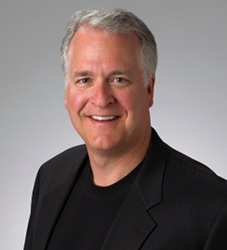
John Baker, creator, The Asking Formula
Photo: The Asking Formula
A podcast interview with John Baker, creator, The Asking Formula is available in the Podcast Section of Hispanic Marketing & Public Relations, HispanicMPR.com. During the podcast, John discusses how to ask for what you want with Elena del Valle, host of the HispanicMPR.com podcast.
John is a former senior executive and sales staff of American Express and Ameriprise Financial and a consultant. After spending several years studying the fears and trepidations people demonstrated in situations across the spectrum of human interactions he concluded that many people do not know the best way to get what they want. He documented the simplest tactics and strategies that he observed in people who were getting exactly what they were after.
John conceived of a process, an uncomplicated easy-to-repeat formula with six straightforward, adaptable steps, to achieve what he believes is the most compelling, confident and effective way to ask for what you want. He applied it in his own leadership and has taught it to many leaders and sales professionals in the country. He can be found at theaskingformula.com
To listen to the interview, scroll down until you see “Podcast” on the right hand side, then select “HMPR John Baker” click on the play button below or download the MP3 file to your iPod or MP3 player to listen on the go, in your car or at home. To download it, click on the arrow of the recording you wish to copy and save it to disk. The podcast will remain listed in the October 2011 section of the podcast archive.
Posted by Elena del Valle on October 9, 2011
PPFA is currently seeking an experienced speechwriter. S/he will play an instrumental role in developing core speech content for the President of PPFA. This position will be responsible for drafting full length speeches, brief remarks, talking points and speech frameworks for the President and from time to time key senior staff. The Speechwriter will partner with the PPFA President, the Director of the OOP, the Vice President of Communications, divisional heads and other key leaders across the country to develop original content and ensure that key messages are consistently communicated across multiple channels (speeches/speaker forums, web, internal communications and events).
A full position description and application instructions may be found
at: https://plannedparenthoodext.hire.com/viewjob.html?optlink-view=view-59210
Applications are due by October 14, 2011.
Posted by Elena del Valle on October 9, 2011
Looking for a high-energy, self-starter to provide programmatic and administrative support to the Director of Latino Engagement at PPFA. The ideal candidate will be a natural organizer, who learns and processes quickly, can think on her or his feet and work with a wide variety of people coming from different backgrounds.
For a full position description and application instructions, please visit: https://plannedparenthoodext.hire.com/viewjob.html?optlink-view=view-63587
Applications are due by October 14, 2011.
Posted by Elena del Valle on October 7, 2011

Have a Nice Conflict book cover
Photos: News & Experts
For most of us conflict is part of daily life. At home and at work, with friend and colleagues most people an constantly exposed to conflicts or potential conflicts. Recent research, according to Tim Scudder, CPA, suggests that the top reason people leave their jobs is because of a poor relationship with their immediate supervisors.
Scudder, chief executive officer, Michael Patterson, Ed.D., vice president of business development, and Kent Mitchell, vice president of communications, of Personal Strengths Publishing, Inc., an international firm that prepares companies and their executives to better deal with conflict in the workplace, believe it is possible to prevent conflict.
Anticipate, prevent, identify, manage and resolve are the five steps they propose to prevent conflict. It is their opinion that conflict can become an opportunity to resolve long-standing issues and lead to more fulfilling and productive lives.
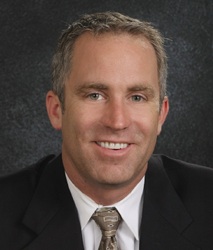
Tim Scudder, coauthor, Have a Nice Conflict
In Have a Nice Conflict: A Story of Finding Success and Satisfaction in the Most Unlikely Places (Personal Strengths Publishing, $19.95), a book they coauthored and published this year, they present a fictional conflict case study to address the conflict process.
“Unresolved or poorly managed conflict costs companies is ways they can’t even calculate,” said Scudder. “Lost institutional memory, low productivity, bad morale, high turnover all cost real companies real dollars. On the other hand, well-managed conflict can not only prevent all those losses, but it can also promote higher productivity and a stronger bottom line. So, the end result will not only be fewer conflicts, but also nicer ones with positive results.”
The 233-page hardcover book is divided into ten chapters. The three authors illustrate conflict issues by presenting Relationship Awareness Theory through the conflicts faced by John Doyle, a fictional character. They believe the character’s approach to conflict leads to positive results that resolve problems and “enhance the relationships of the people involved.”

Michael Patterson, Ed.D., coauthor, Have a Nice Conflict
Some of the suggestions shared in John’s Notebook at the end of the book include seeking to work well with others, helping to make people feel worthwhile, meeting others where they are and building the relationship whenever possible.

Click to buy Have a Nice Conflict
Comments:
Filed Under: Books
Posted by Elena del Valle on October 5, 2011
By Jennifer Dublino, chief operating officer, Scent Marketing Institute
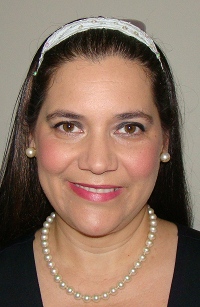
Jennifer Dublino, chief operating officer, Scent Marketing Institute
Photo: Scent Marketing Institute
Go to any Latin American country or Latino community in the U.S. and you will find that you are immersed in a multi-sensory experience. Colors seem more vibrant, music more dramatic, tastes more distinctive and the smells more heady.
I was born in Miami, and while not a Latina myself, grew up immersed in a delicious mix of various South and Central American and Caribbean cultures, with Cuban being predominant. Along with their close family ties and warmth, one of the things I love about Latinos is their passion for fully experiencing the world through the senses.
While each of the senses, to one extent or another, influences our behavior and mood, scent is the most powerful of our five senses after sight. Yet, when it comes to marketing, scent is often neglected in favor of solely visual and audio messages. When brands want to appeal to the large and growing Hispanic market in the US, this narrow use of the senses can be a big mistake.
Read the entire article Scent Marketing Connects to Hispanics on a Deep Cultural Level
Posted by Elena del Valle on October 3, 2011
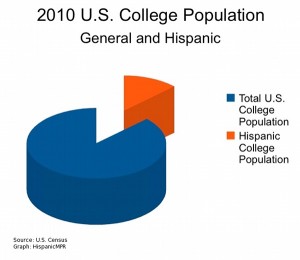
2010 college population – click to enlarge
Marketers and businesses targeting college youth should be aware that the demographic profile of college students is shifting. For many this is not surprisingly given the 2010 United States Census results. Last year there were 320,000 fewer non Hispanic whites in college compared to the year before. At the same time, the number of Hispanics in college for the same period increased by more than the decrease of non Hispanic whites.
There are approximately 12.2 million students attending higher educational institutions in the United States according to the Census. Of those about 1.8 million are Hispanics attending for profit and non profit institutions.
In 2009, there were 2,286,261 Hispanic undergraduate and graduate students at non profit institutions in the United States and Puerto Rico. By 2010 that number had increased to 2,476,417 resulting in an increase of 190,156, according to the Hispanic Association of Colleges and Universities (HACU). That organization’s source of data is Integrated Postsecondary Education Data System (IPEDS), Pew Hispanic Center Reports, The Condition of Education 2011, and the Digest of Education Statistics 2010.
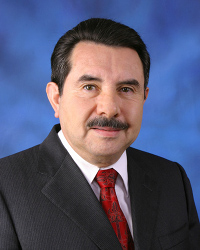
Antonio Flores, Ph.D., president and CEO, HACU
“We have seen a steady increase in the number of Hispanics entering higher education over the last several decades. The only surprising thing about this year’s increase is its size. Such a large one year increase in Hispanic enrollments underlines the importance of acting now to assure college and career readiness for this population which already makes up half of those entering the American workforce today but are still handicapped by low college attendance and completion rates,” said Antonio Flores, Ph.D., president and chief executive officer, HACU.
The Census data reflects 350,000 new Hispanic students attending college, a 24 percent increase between 2009 and 2010. That number is higher than the 190,156 increase above because it includes for profit and non profit organizations.
The largest increase of students in non-profit institutions from 2009 to 2010 was in California (71,952), Texas (52,464), New Mexico (5,538), New Jersey (5,428), and Florida (5,372). Hispanic student percentage distribution of fall 2009 enrollment: New Mexico, 42.4 percent; California, 30.3 percent; Texas, 29.7 percent; and Florida, 20.9 percent.


















